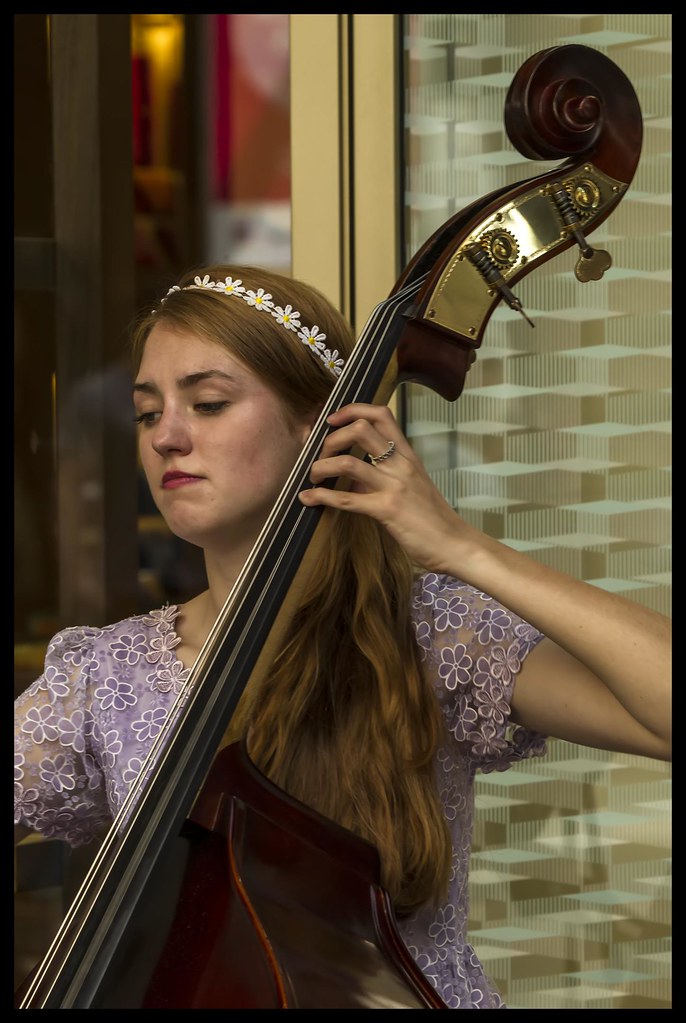Posts Tagged ‘Double Bass Technique’
Double Bass – Pizzicato (Musicians)(Psychology)(Pain)(Strain)(Injuries)(Posture)(Alexander Technique)(Albuquerque)
This ebook, An Alexander Technique Approach to Double Bass Technique, is published on this website in a PDF format. It is very detailed and practical, and it will give you the physical tools you need to take the limits off of your ability to create the accurate bass technique you want without sacrificing your body.
This ebook is also for sale on all AMAZON websites in a KINDLE format.
Located in Albuquerque, NM, U.S.A. (MOVEMENT THERAPY)
Recently I heard from a jazz bassist who said he was having aches and pains in his right wrist and fingers as he played pizzicato on the bass.
As an Alexander Technique teacher and classical guitarist, my first thought went to what is he doing in his right shoulder as he plays. Is he using too much tension is his shoulder and upper arm to create stability in his forearm and hand and fingers as he plays?
This is almost one of those guaranteed right first assumptions. Almost all performing musicians use too much muscle to stabilize an arm to get control over their instrument. It is in a bassist’s best interest to experiment with how little shoulder muscle it takes to move and/or stabilize the arm, so that when to plucks the string, it doesn’t move the hand instead of the string.
My second thought was, is he playing the strings by pushing too much toward the neck of the bass, rather than plucking the strings more parallel to the neck. If he is pushing the strings too much toward the neck, then he is creating tremendous resistance (back pressure) of the strings into the fingers, hand, and arm. The strings on the bass are pretty powerful.
When he plays a string, how much less tension can he have in his wrist and finger joints? If he anticipates playing pizzicato by tensing his fingers, then he is forcing the bones of the wrist and fingers together, and as he plays, he will be bending fingers joints with compression (the bones forced too close together). We have a saying in the Alexander Technique, “Do less”.
When you play pizzicato on the bass, you are turning a string instrument into a percussion instrument, which only requires a quick strike of a string to play. THERE IS NEVER ANY REASON TO PRESS THE STRING OR HOLD TENSION IN THE ARMS, HANDS, OR FINGERS BEFORE YOU PLAY OR EXCESSIVE TENSION AS YOU PLAY. Playing pizzicato on the bass should be like using a hammer. Ideally, the carpenter uses the quickness and momentum of his triceps and forearms to drive the nail, and he never pushes the nail before or after he hits and drives it into the wood.
As a bassist, use the reflexive quickness of a finger twitching through the string to create an effortless pizzicato technique.
I would also suggest you move the fingers from the main finger joint, the large knuckle, rather than bending the fingers at the first two joints to play. When you move a finger from the main knuckle, there are two advantages to playing this way.
The first is you are moving the whole gently curved and stable finger from the flexors of the under side of the forearm. This way you don’t stress the joints of the fingers playing an instrument with such powerful strings.
The second advantage is you create a much nicer tone. As a classical guitarist, I learned that if you pluck strings with gently curled fingers from the flexors, you can play the guitar as loudly as the instrument will allow you to, without sacrificing the quality of the sound.
So, the main idea I want to get across here: How effortless can you make pizzicato on the double bass?
